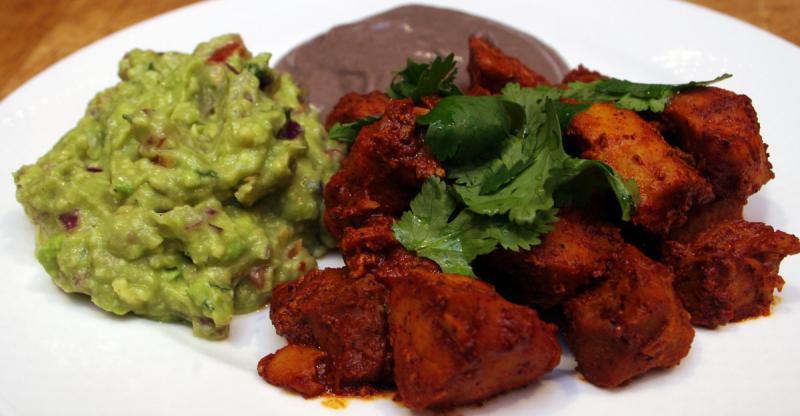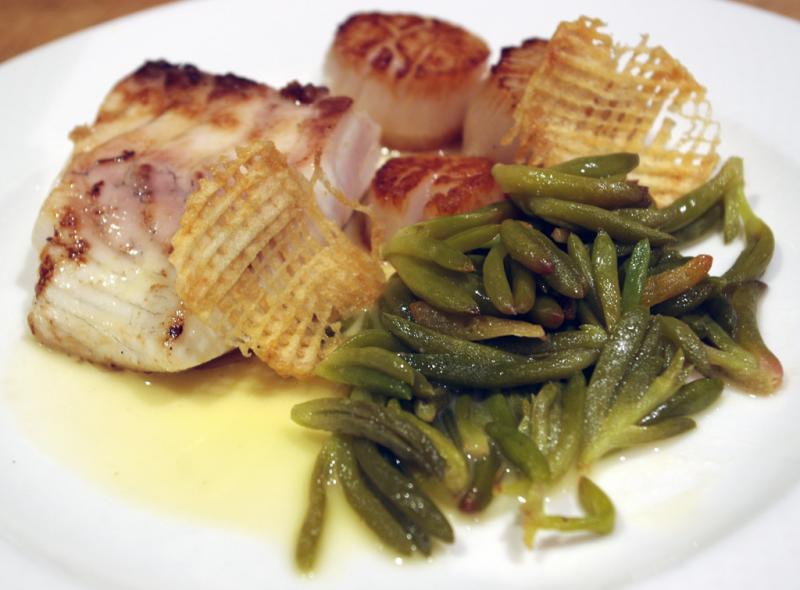-
Posts
2,606 -
Joined
-
Last visited
Content Type
Profiles
Forums
Store
Help Articles
Everything posted by nickrey
-

What's the term for this texture, surface effect...?
nickrey replied to a topic in Food Traditions & Culture
How about "fissured"? -
Fantastic technique as usual. Wondered what you wanted the pig's blood for. In real life does it look as much like a chocolate slice as the picture makes it seem?
-
Just reread this. Try a cartouche, it should reduce the liquid loss.
-
Welcome Mayland. I've been making pressure cooked stocks for a while now. First thing is, the method sucks almost all the flavour out of the chicken which is great for the stock but not so good for eating the by-product meat. You could always do a remoulage with the left overs to reduce waste. Second is, and I'm not sure this is in the MC at home recipe as I am thousands of kilometers from my copy at the moment, you really need to immerse any unroasted pieces of chicken in water, bring to boil, and then drain to remove the impurities that cause the cloudiness. Third is when you pressure cook, do not have it cooking so that the release valve is hissing. It needs to be at the point where it is pressured but not needing to release energy. If you do these things, you should get a clearer product.
-
Aha, that may explain it. Think it was around 20% less liquid.
-
While we're talking about potential errors. I made the brown pork stock for my carnitas. It is a variant on the brown beef stock (sorry away from books so no page number). The stated yield of 1 liter is more than the amount of liquid included in the recipe. I added additional water and it worked well.
-

eG Foodblog: Panaderia Canadiense - Surf, Sand, and Sierra
nickrey replied to a topic in Food Traditions & Culture
Really looking forward to your second blog. I love seeing foodie views from exotic places across the globe. -
My copy arrived the other day. First time cooking something from the book. Pressure-cooked Carnitas with Refried Bean Foam and Guacamole (the latter not from book). Really tasty and loved the foam.
-
Thanks. I forgot to explain, but one element in the dish was lasagna made from black trumpet and parsley. These were the ones I found in the woods earlier in the week. You lay them with parsley on one half of a sheet of pasta brushed with egg whites, then fold over the other half and run through the pasta roller again. It's a nice technique, and something you could use with pretty much anything that will lay flat. That process would make a lovely exterior for a large raviolo. Can't wait to try it.
-
Scientific research back to 1979 (Buck, Hickey and Rosenau, Journal of Food Science) reported that meat cooked in water (ie sous vide) is more uniformly coloured, more tender, and gives greater cooking yields. This is due to the conductivity of the cooking medium making it very relevant for a discussion on cooking methods. The sous vide thread is long and comprehensive, McGee contains extremely relevant information for those who can understand it. Perhaps the questions can be refined after these sources have been consulted so we do not waste our time stating what is apparently obvious.
-

Best Brands of Sake, Mirin, and Fish Sauce to Cook with?
nickrey replied to a topic in Kitchen Consumer
Yep, first catch the anchovies... With the time involved in fermenting and the aromatic nature of the raw materials, I'm content to leave this one to the experts. -
The answers to all these questions are in the original sous vide thread, but to answer one of your questions, you can braise meat very effectively in a pressure cooker, which brings the liquid to temperatures greater than boiling. The reason for using liquid as a medium either in braises or in sous vide cookery is that transmits heat much more effectively than air. You can easily put your hand in a 100C oven, I'd never do the same with boiling water. Heat acts on meat to break down its various components which is real rather than faux tenderness. It also causes the fibers to shrink, pushing out liquid. This will resilt in dry meat. Cutting the fibers with a jaccard tenderizer reduces this effect. Cooking meat is the application of heat to transform the raw product into something more appealing. It is a combination of source, time, and technique as well as a function of the type of meat used. This is why you see some meats that are recommended for braises and othes for grilling (and vice versa). Sous vide is a technique that can cook meats in a way that is different from other techniques, which is hy many of us use it. We also cook, chill, and reheat the meat over a very high heat. This gives a Maillard effect on the meat that is very tasty. Typically we would reheat sous vide before doing so to ensure that the centre is up to an appropriate temperature. The idea is to brown the outside without overcooking the perfectly cooked meat.
-

Best Brands of Sake, Mirin, and Fish Sauce to Cook with?
nickrey replied to a topic in Kitchen Consumer
I don't know if you can get it where you are but David Thompson (Nahm) recommends using Megachef fish sauce. -
The recipe uses dried.
-
Za'atar (sorry auto correct changed it) is the herb as well as the condiment described above. It is a specific type of oregano. You can use Greek oregano as a substitute.
-
I pre-ordered this as a Kindle book and received it a few weeks ago. Yotam Ottolenghi grew up in the Jewish west and Sami Tamimi grew up in the Moslem East. The book tries to capture the diversity of food across the complex city that is Jerusalem. I haven't cooked anything from it as yet but reading the recipes it seems that they are a worthwhile addition to any Middle Eastern collection. The "Kawarma" recipe looks good. It is made with lamb neck fillet chopped by hand, spices including black and white pepper, cinnamon, allspice, and nutmeg. Herbs include za'tar leaves, parsley and mint. Also adds vinegar and salt. Sounds really tasty.
-
Did you mean 85C? Not sure why you'd need a doctor at that temperature.
-
I've done both and was taught how to crumb (as you do) from Austrian in-laws. Tradition aside, I think the deep frying gives a better product - not on a different scale but along the same scale.
-
I always deep fry schnitzel at 180C until golden as I often find shallow frying temperatures to difficult to maintain with accuracy. Proper deep frying at a constant temperature leads to minimal oil absorption. There is a reason why the Japanese use deep- rather than shallow- frying for similar preparations.
-
Tip from a cooking demo on the weekend. Add some vinegar to the ice when you chill the cooked eggs. This eats into the shell and makes them much easier to peel. No info on timings but worth an experiment.
-
Finally found some samphire. Cooked up some Snapper and Scallops to go with it, served it with scalloped potato chips. An alliterative dinner.
-

"Modernist Cuisine at Home" by Myhrvold and Bilet
nickrey replied to a topic in Cookbooks & References
If my memory serves me correctly, Amazon CAN did the same thing with the original Modernist cuisine, including sending some without the Kitchen Manual. -
I don't have the book as yet but somewhat in their defence Thai food is not meant to be cooked entirely to a recipe. Differences in ingredients make it virtually impossible to give exact proportions. I went to a cooking demonstration by David Thompson yesterday and the very final thing that he did was taste the dish and adjust the amounts of fish sauce, sugar, etc to taste. Without this you will not get a sweet/sour/salty/hot balance, which is the desired outcome in Thai food.
-
Only that we know that polycarbonate is food safe and, most importantly, tolerates the temperatures used in sous vide cooking. If cost is an issue, why not get something that can be used for other purposes, eg a 20 liter stock pot?
-
Try this one. At 150mm, it should be deep enough for your circulator.



